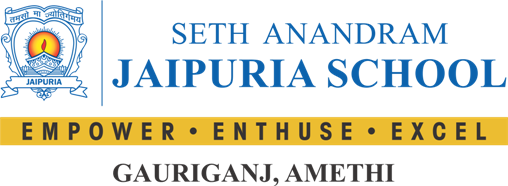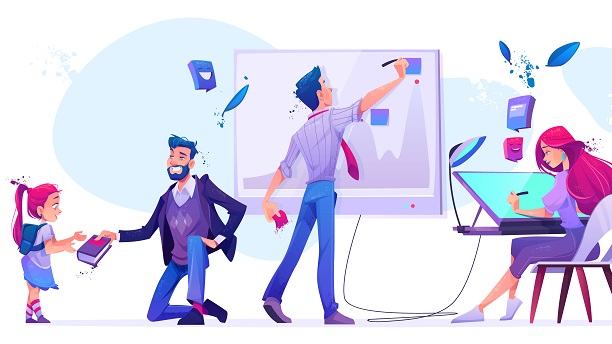Teacher and new-age teaching
 The year 2020 is proving to be a watershed, an inflexion point in the lives of the entire mankind in all areas of human endeavour and activities. Suddenly an invisible tiny monster appears from nowhere and brings the entire humanity to its knees. Everything stops and everyone is pushed indoors, and waits for some signs of that monster relenting in its pursuit of an unprecedented wave of virulent infection and killing spree.
The year 2020 is proving to be a watershed, an inflexion point in the lives of the entire mankind in all areas of human endeavour and activities. Suddenly an invisible tiny monster appears from nowhere and brings the entire humanity to its knees. Everything stops and everyone is pushed indoors, and waits for some signs of that monster relenting in its pursuit of an unprecedented wave of virulent infection and killing spree.
Great minds from the scientific and medical world are completely bewildered and cannot find an easy solution, or cure to the phenomenon, that has assumed a pandemic character in a short span of time. All economic activity, in practically all parts of the world has come to a standstill, barring those that are essential for ordinary sustenance.
One sector, however that stands out and has taken the challenge head on is the sector relating to knowledge acquisition, its dissemination, and notably the profession of teaching. It would not be an exaggeration to state that a teacher today is the busiest, the most wanted entity who had to reinvent himself/herself to respond to a situation that had no parallel in the history of any paradigm, relating to the evolution and delivery of knowledge.
The mandates of social distancing, compulsory lockdown and inability to step out of their respective homes posed an altogether different challenge. The only option was to resort to distance-teaching (as against the practice of distance learning), create an experience of a virtual classroom and deliver content and syllabus without actually seeing who you were delivering to. These experiences were earlier shared by the same teachers in the form of fairy tales. Now they had to get into that role in real-time measures.
It is interesting to observe how the methodologies of delivery of knowledge and teaching, have undergone such drastic changes in different era. We are familiar of Gurukul traditions of teaching and learning, wherein the disciple/learner had to stay in the austere habitats owned by the Guru. The commoner and royalty were treated alike by the Guru and his household, and they would spend formative years of their life in pursuit of knowledge on a model that was based upon the dictum- “serve and learn”. Interestingly, this model of education was complete and holistic, and covered practically every aspect of human growth, including knowledge, skills, sports, fine arts, warfare and everything that had contemporary flavour.
Guru-shishya Parampara now survives only in a few disciplines such as classical music, dance and a few crafts which demand life-long engagement and dedication.
With the passage of time and expansion of spaces, infrastructure and population, Gurukul system gave way to a more organized and structured system in the form of schools, colleges, universities and other institutes of specialized learning. The oldest existing and continuously operating educational institution in the world is the University of Karueein, founded in 859 AD in Morocco.
Available records also suggest that the oldest university in the English-speaking world is Oxford, founded sometime in the later part of eleventh century and continues to be one of the most prestigious institution of learning.
In the Indian context, there is adequate archaeological evidence available that points towards the existence of Universities such as Taxila an Nalanda in the BC era.
But that is as far as the historical narrative goes with respect to education and its evolution over several centuries.
In 21st century however, the narrative is very different. In fact, the education story of the first 20 years of the 21st century was just an extension (with minor modifications) of the story that was being in practice for little over a millennium. The new-age teaching model with respect to the mode of delivery, pedagogical systems, assessment and examination will undergo a paradigm shift, and the entire teaching community shall have to reinvent themselves to stay relevant.
Some of the essential features of the new paradigm will be as follows;
- Technology will play a pivotal role in the dissemination process.
- There will be a proliferation of technology platforms driven by the varying needs of learning models. Needless to mention that it will have to be secure, fast and user-friendly.
- Rote learning and didactic practices will have to give way to the experiential format.
- Education will be imparted in a mode of active learning and on a PBL format.
- Education will have to reorient itself to establish close nexus to real-life situations.
- The emphasis therefore will shift from acquisition of knowledge to acquisition of skills. Teachers will have to get appropriately skilled to pass them on to their students.
- Students of the 21st century are smarter and this is an oft repeated statement. They are smarter not on account of any superior genetic reengineering, but because of an independent access to huge amount of data and information. But whether they are more knowledgeable or wise is a debatable proposition. Teachers will have to take on a new role of Information/data analyst to guide the children in right direction.
- Education will have to be redefined and the curriculum/syllabus will have to be restructured to become more meaningful, relevant, relatable and user friendly.
- Education will also become trans disciplinary creating a judicious mix of science, philosophy and liberal arts.
- Study of Nature, natural phenomena, environment and maintenance of ecological balance will become an integral part of the course content. These areas of study will have a strong experiential bias.
- Every educational institution will create a structured curriculum for imparting socio-emotional learning. Academic and character building will run as parallel streams with hands-on activity and purposeful engagement.
- Teachers and schools will also be called upon to create a pattern of differentiated learning. “One size fit all” will not work.
- Artificial Intelligence, Machine learning, cloud computing and Data analytics will become important tools that will be used extensively in the education space. Children will have to become adept in writing computer programs, coding and algorithm for multiple usages. Teachers will have to keep pace with these developments.
These are formidable challenges and the entire teaching community shall have to take a serious note of these changes and prepare themselves appropriately.
Mr. Vinod Malhotra
Director – Corporate Relations
Seth Anandram Jaipuria Group of Educational Institutions


